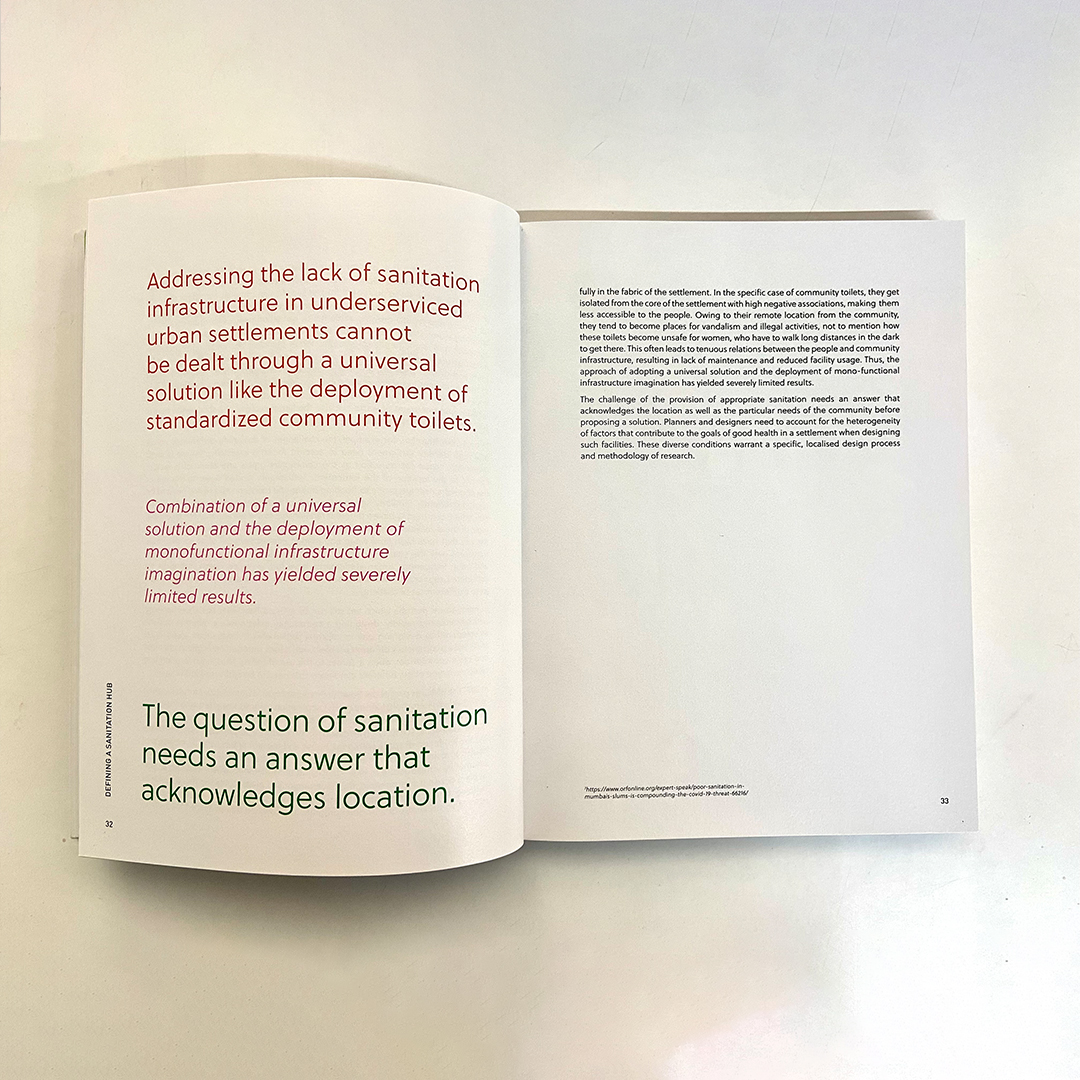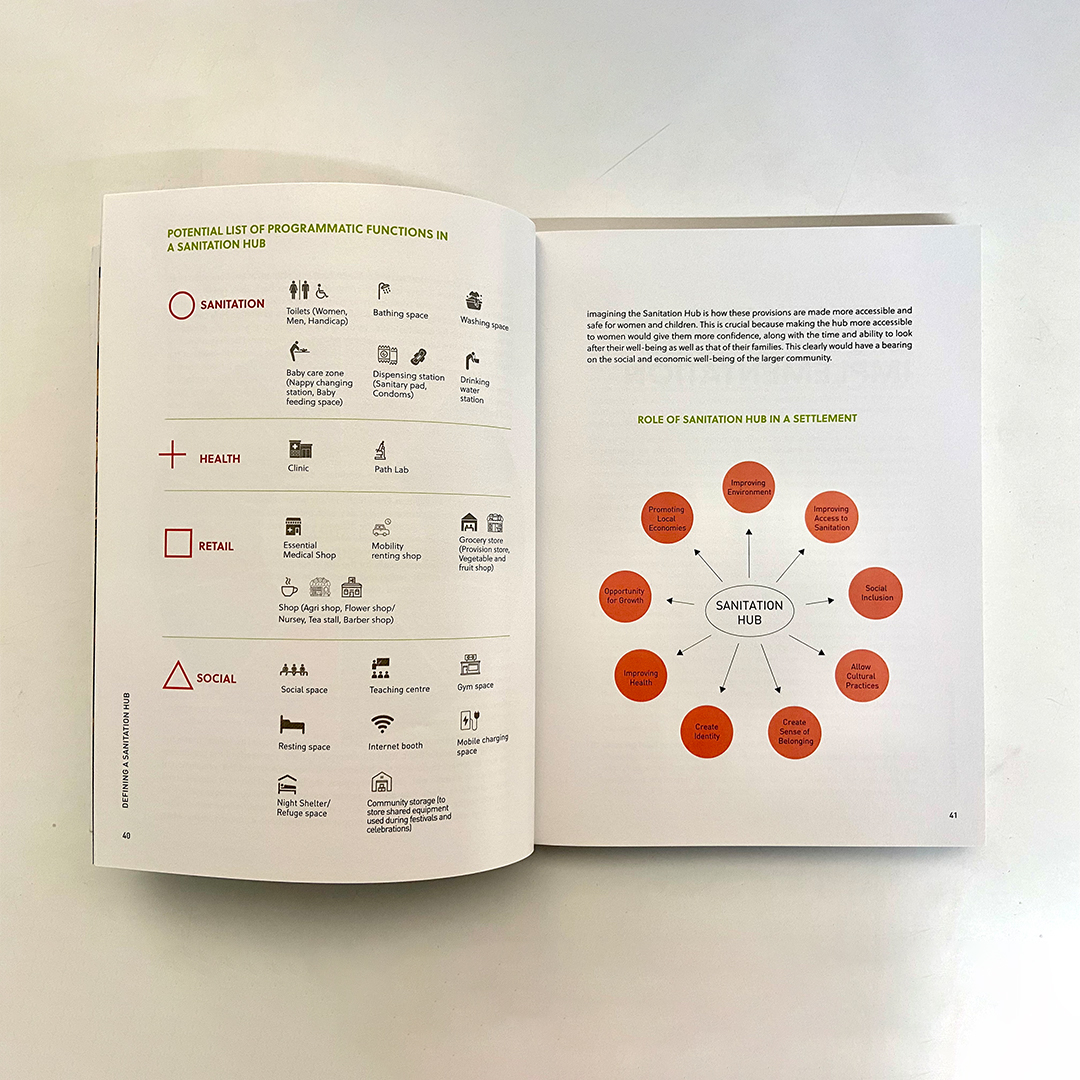Imagining a Sanitation Hub






by
Ela Singhal, Jay Vadodaria, Sai Joshi and Rahul Mehrotra
Ela Singhal, Jay Vadodaria, Sai Joshi and Rahul Mehrotra
Produced in collaboration
with Lakshmi Mittal and Family
South Asia Institute
with Lakshmi Mittal and Family
South Asia Institute
The project addresses the design challenges of how a community toilet can be re-interpreted as a sanitation hub rather than just a mono-functional facility. Specifically exploring the design parameters for a sanitation hub, the project looks at how the hub could contain a range of programmatic functions: community toilets, a healthcare centre (such as a clinic or a pathology laboratory), a laundromat, a hub for clean water and so forth. The hub could also serve as a platform for community activities.
The design of the Sanitation Hub includes development of ideas that address program, site planning, construction system and materials ideated through the introduction of a basic grid. This grid along with a modular language for assembly allows the abstraction values of a kit of parts approach to translate into a specific solution based on the location and need of the community where the Sanitation Hub is being built. A key criterion for the design of this prototype is the notion of reversibility — encompassing design, material, technology, and structural systems that are deployed. The intention here is an optimistic one — one that hopes these settlements will be upgraded and their infrastructure integrated in time, thereby allowing the ‘hub’ to be dismantled or reversed or even adapted in more ideal ways to other community uses within the settlement.
As part of this project, prototypes for a Sanitation Hub are proposed at two diverse geographic locations, a Rurban condition of the growing village of Virochannagar, in the Ahmedabad district of Gujarat; and an Urban context - Ramgad Chawl, an informal settlement on the banks of Mithi river in Mumbai
explore more ︎︎︎
